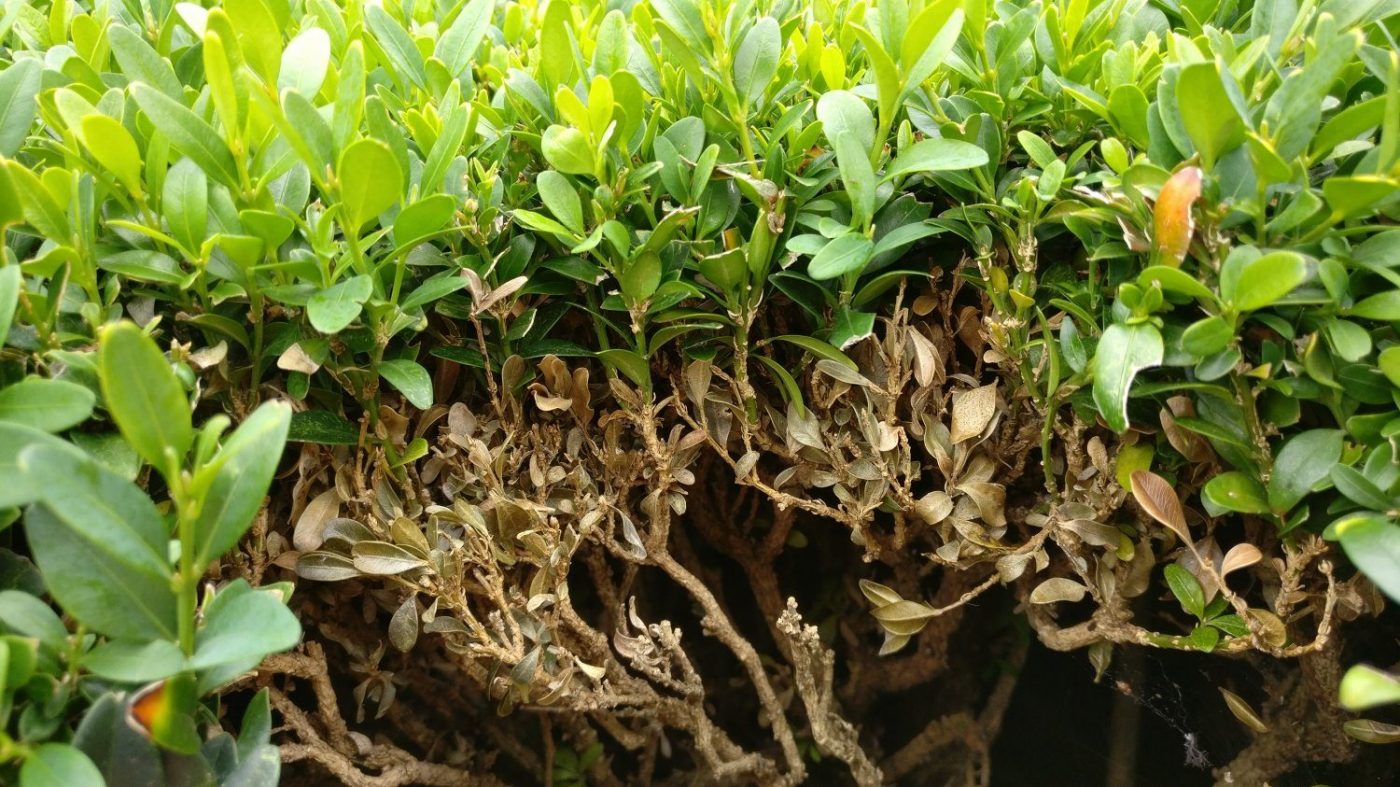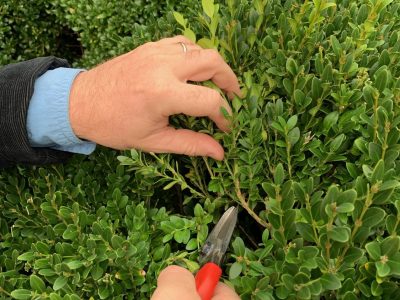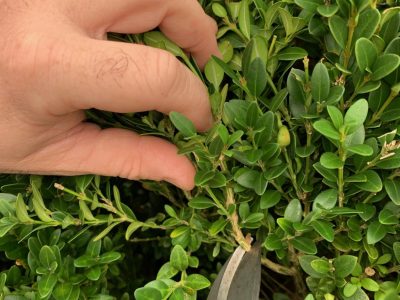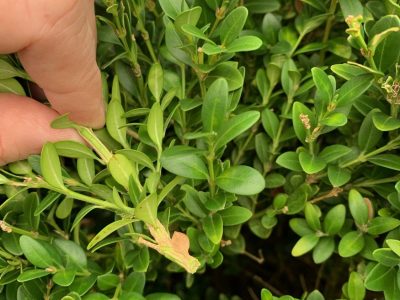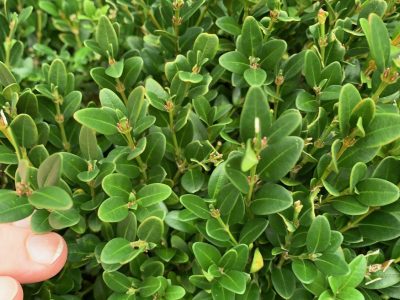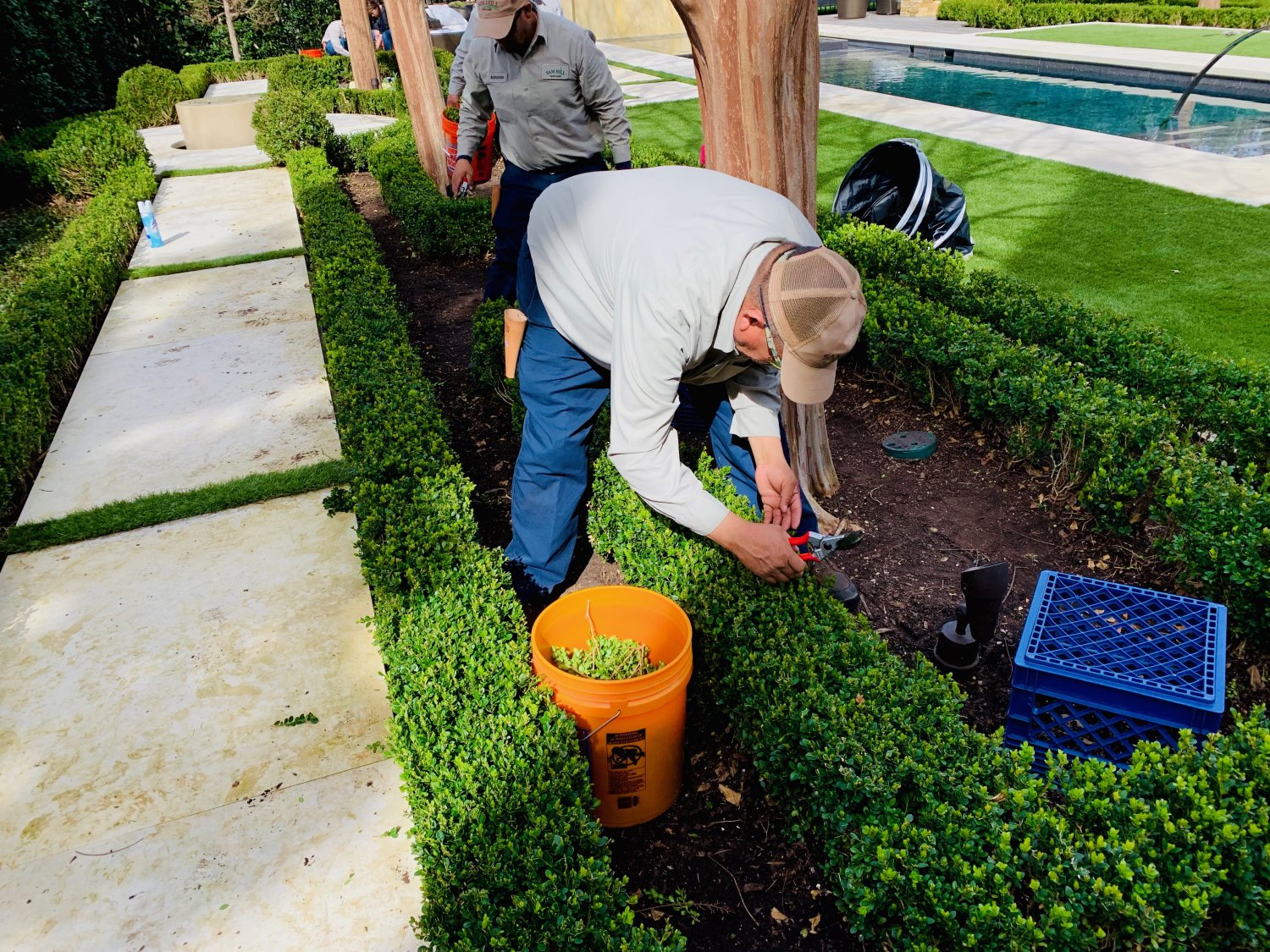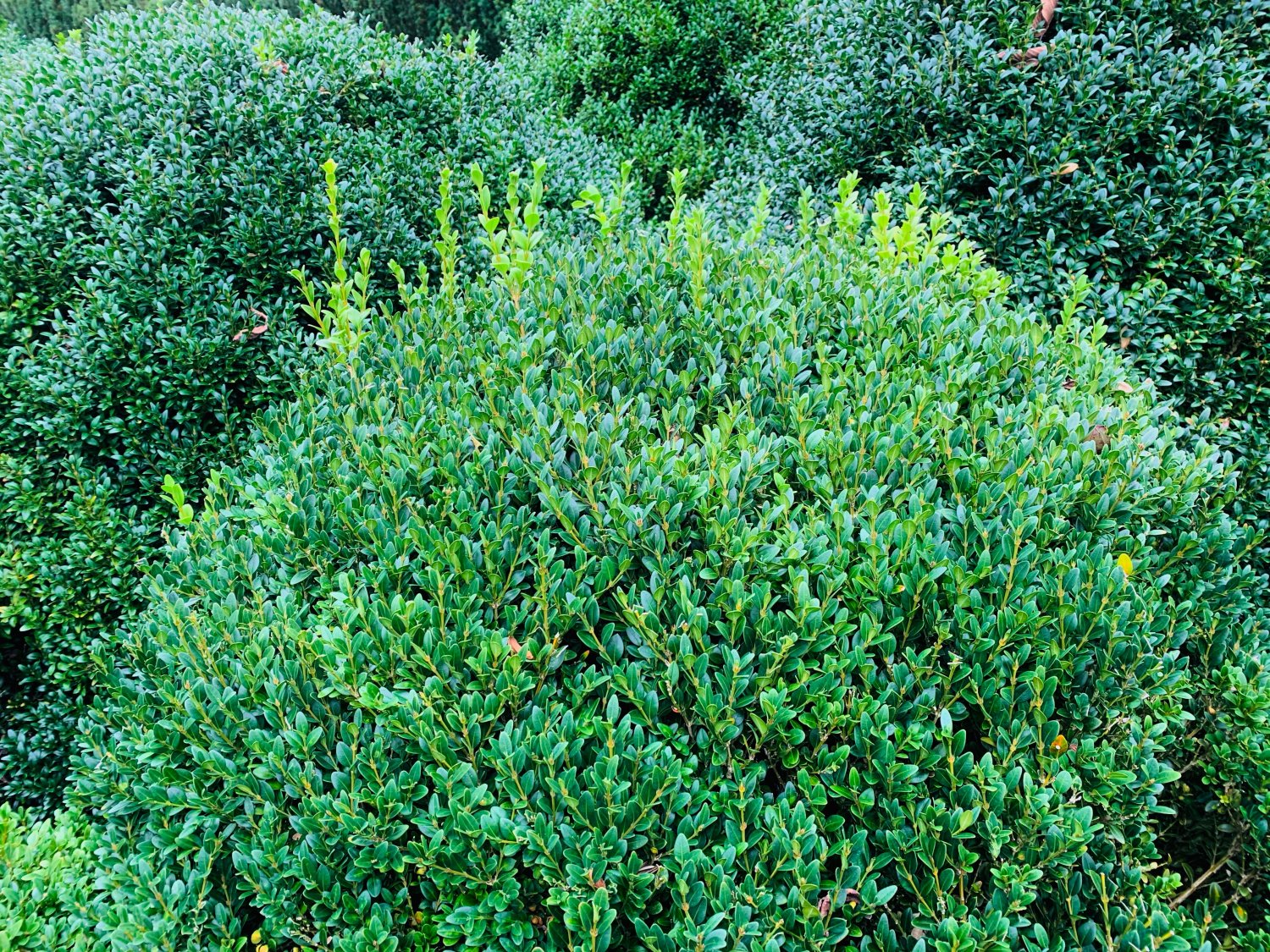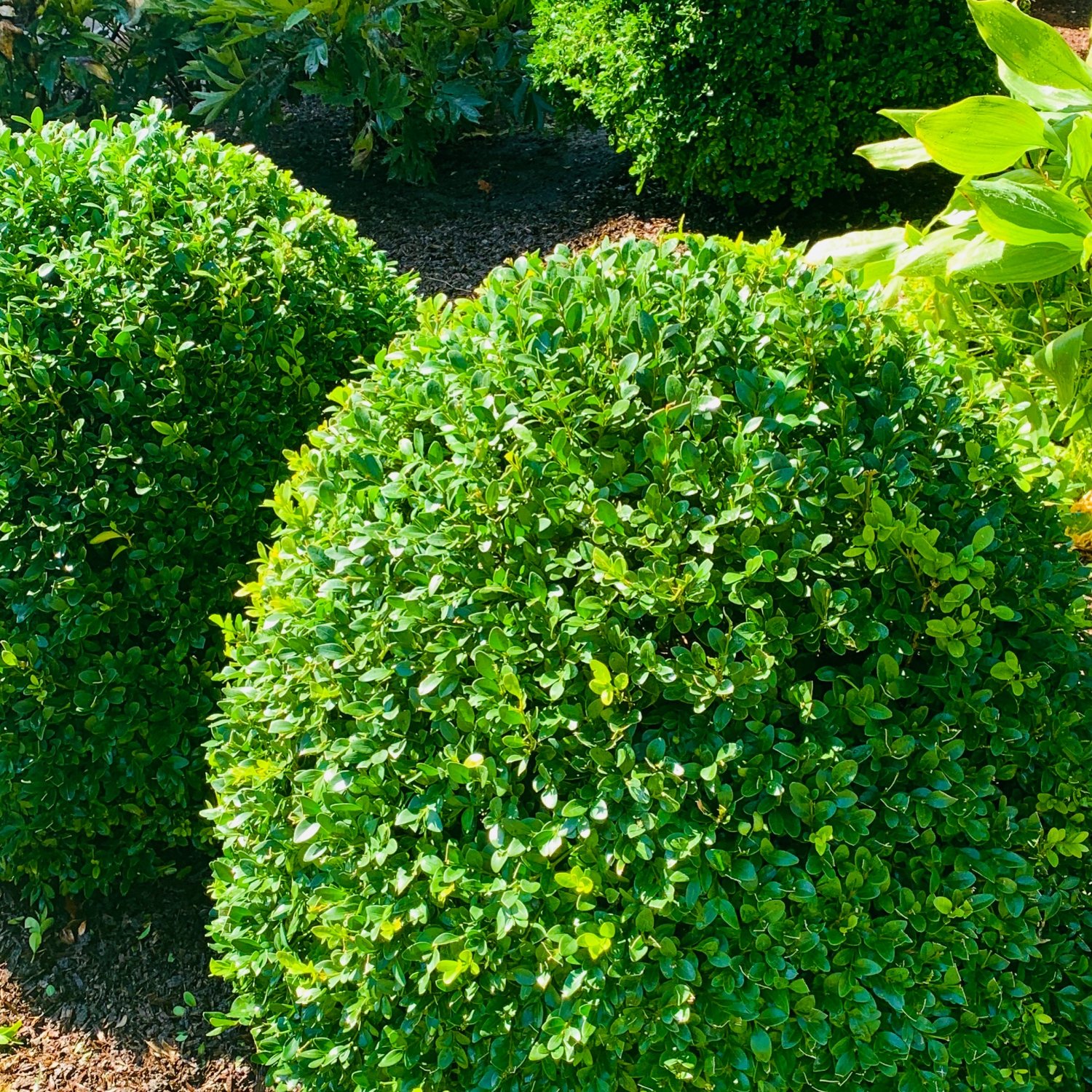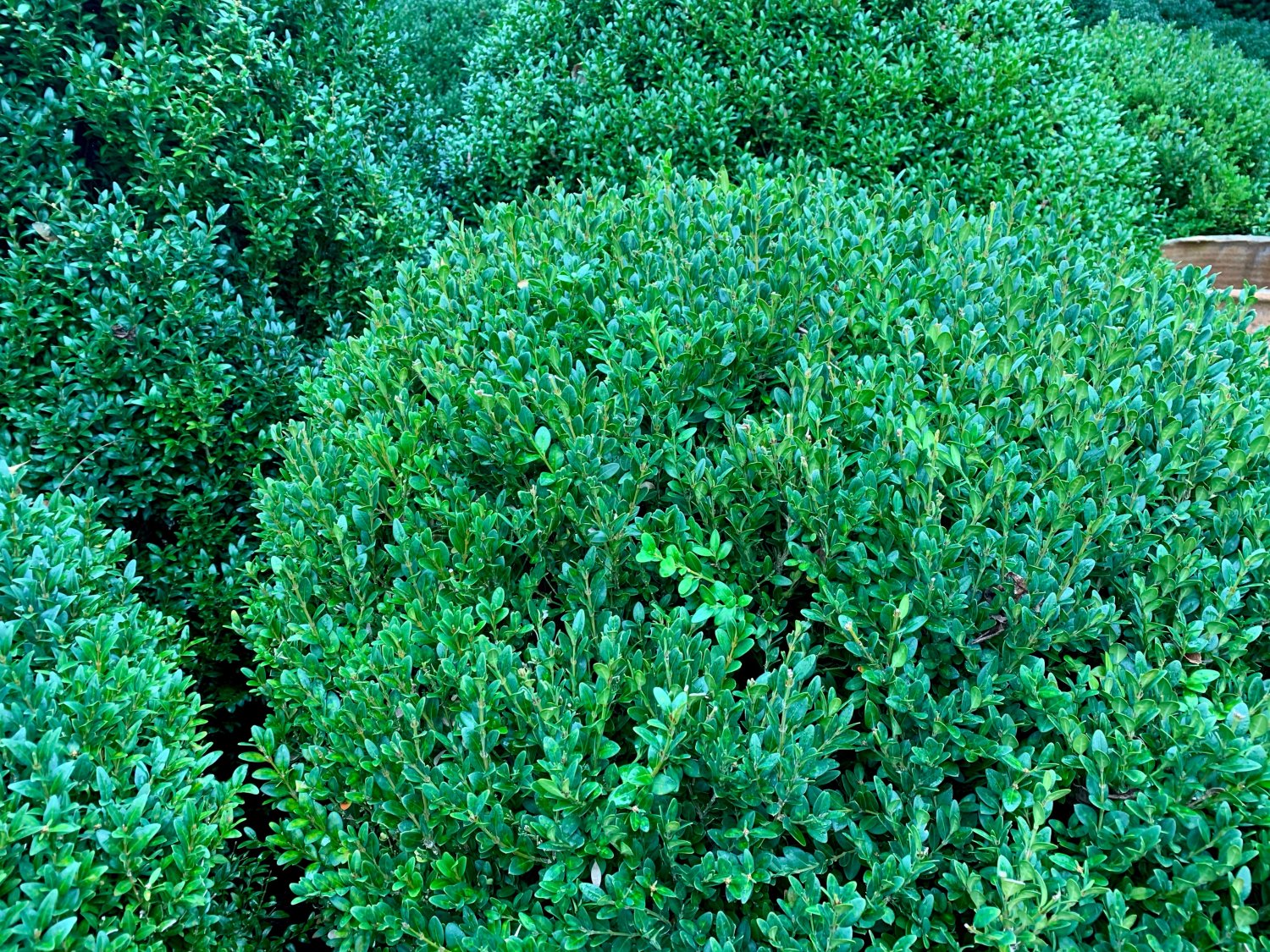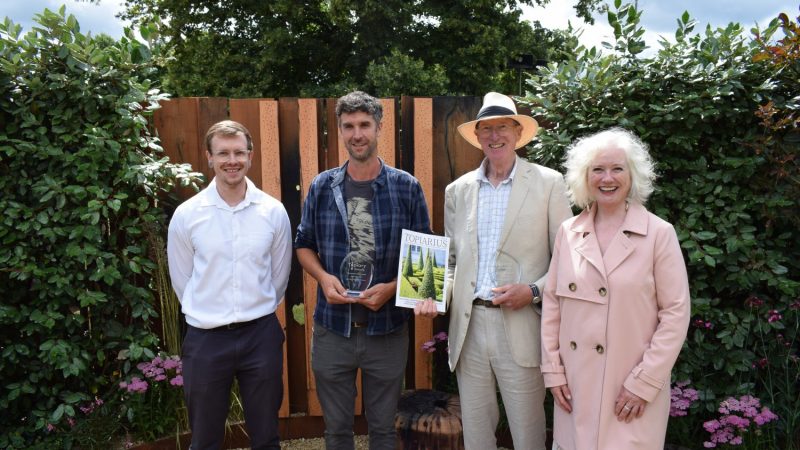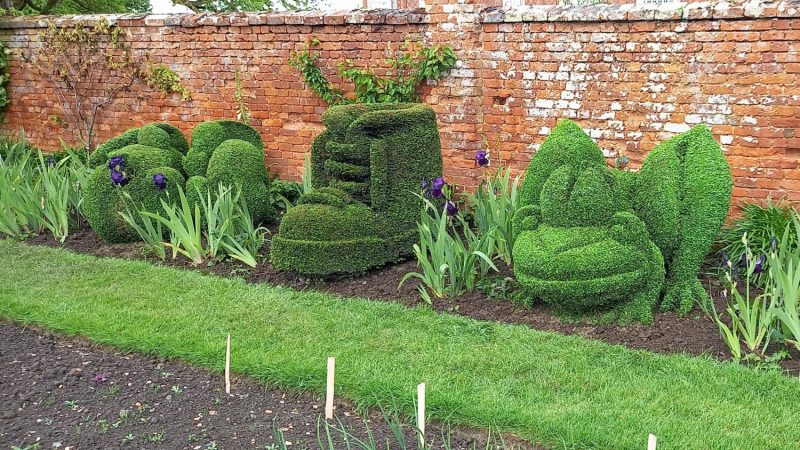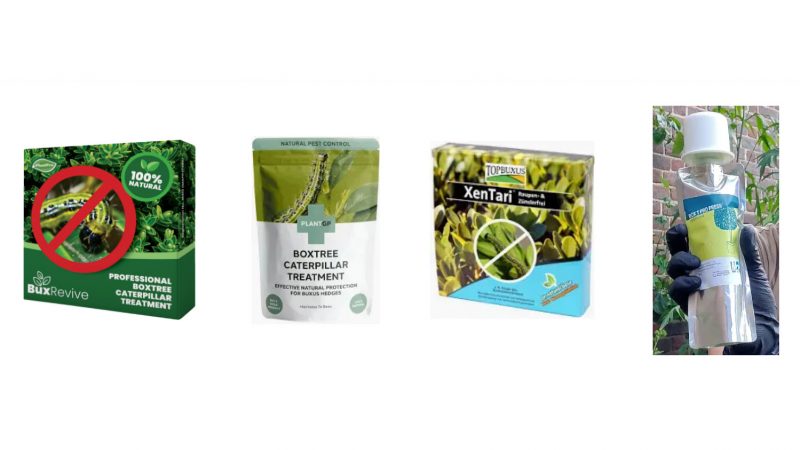How to Thin Your Boxwood
Whilst visiting one of the gardens at this years AGM, our US guest Lynn Batdorf, gave an impromptu demonstration of thining. Even though it was raining, everyone watched as if seeing a magic show close up, Lynn cut out bits of the hedge and yet after a quick brush over with his hand the hedge didn’t look any different, no holes just the same crisp looking finish but light was now getting deeper into the plant.
There’s a lot of benefit to thinning from the plants point of view, but in the UK there is a tendency to think it’s only the folk in the US that do that sort of thing. There seems to be a belief that it isn’t possible to achieve crisp lines when you thin a hedge. This doesn’t have to be the case, there is a happy medium that allows us to achieve the look we want and also invigorate the plants that make up our hedges and topiaries.
Charles King Sadler, like Lynn Batdorf, hails from the US and explains why and how we should all be thinning our bushes.
THINNING by Charles King Sadler
Boxwood – particularly those in full-sun areas are prone to growing a dense outer layer of foliage that prevents air circulation throughout the plant. Repeated clipping also contributes to overly dense foliage. Dense foliage contributes to lack of air circulation in the interior of plant which can make it more susceptible to disease and pest damage, potentially killing plant entirely. Additionally, thinning can aid in successfully dwarfing the plant; keeping it in scale within a designed landscape. I’ve observed thinning creates a more structurally sound architecture, reducing incidence of damage from snow, ice, wind or collisions.
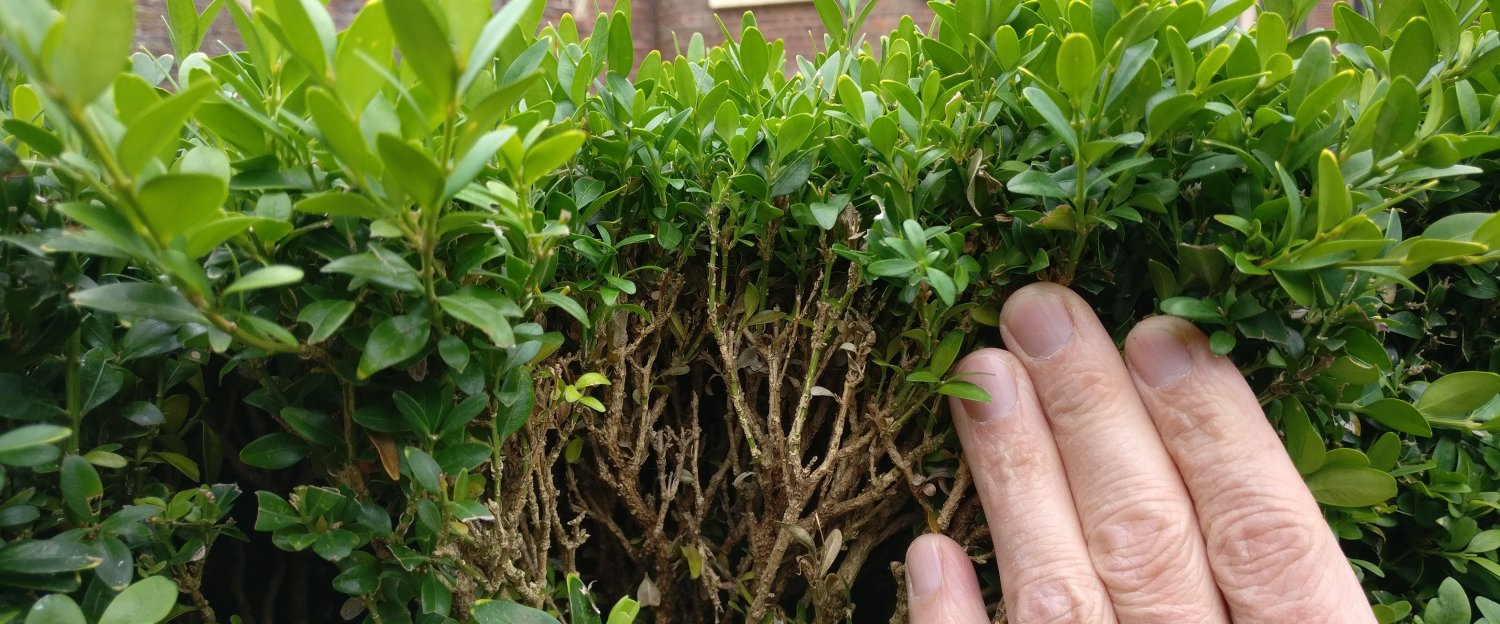
Thinning refers to cutting approximately four to eight inch stems uniformly from the plant, allowing sunlight to reach its inner branches and encourage foliage growth from older interior branches. These older branches generally are free of foliage at cut-back location. To learn what areas of the plant are densest we “pet” the boxwood, this quickly reveals what areas of the plant are most rigid and have the least spring or give when “petted”. One can then pull back the foliage at this location to confirm the dense area which will most benefit from hand thinning. These cut-back locations often sprout new growth. Cuts can also be made to a branch juncture, facilitating the plant to callous over at cut locations.
By “polka-dotting” or making regular thinning cuts, one is encouraging plant to produce lush new growth from the inside; this aerates the plant and can create a cloud-like, pillowy texture that is characteristic of mature boxwood. Thinning is also appropriate for boxwood that will be tightly sheared into formal shapes, topiary, hedges, etc.
Boxwood can be regularly thinned, either annually or more frequently throughout the year if needed, though heavy thinning is discouraged before winter as it may cause injury to the plant. Typically, thinning a boxwood results in the removal of about 10% or less of its branches, this can be performed only if the plant is vigorous and healthy.
- Select branch to remove
- Make a clean cut above last growth
- Remove from hedge
- Removing 10% makes little visual difference
Although thinning can be done any time of the year, it is recommended to perform pruning immediately before active growth periods for the plant to stimulate strong spring growth. Doing so in this time frame also minimizes the risk of the plant being affected by diseases.
Hand pruners or secateurs (bypass pruners) are the optimal tool to thin boxwood as they can reach beyond the plant’s external foliage and ensure a clean cut. They should always be cleaned and sanitized with a disinfectant or Isopropyl Alcohol (70%) prior to and following use to prevent disease introduction/transfer. I sanitize tools regularly, about every 15 minutes or so while pruning. Also sanitizing tools is suggested when moving to a new area of the landscape. Sanitizing at the end of the day is also vital, since the next day’s work may be at a new location.
Charles King Sadler
King Garden
Charles has also provided some useful links to other websites where you can read more on thinning:
Thanks to Charles for taking the time to share his knowledge of boxwood and also providing the excellent pictures that clearly demonstrate the techniques required to thin, or some call it ‘pluck’ correctly. Thanks also to Lynn Batdorf for the demo during our 2019 AGM garden visit.

